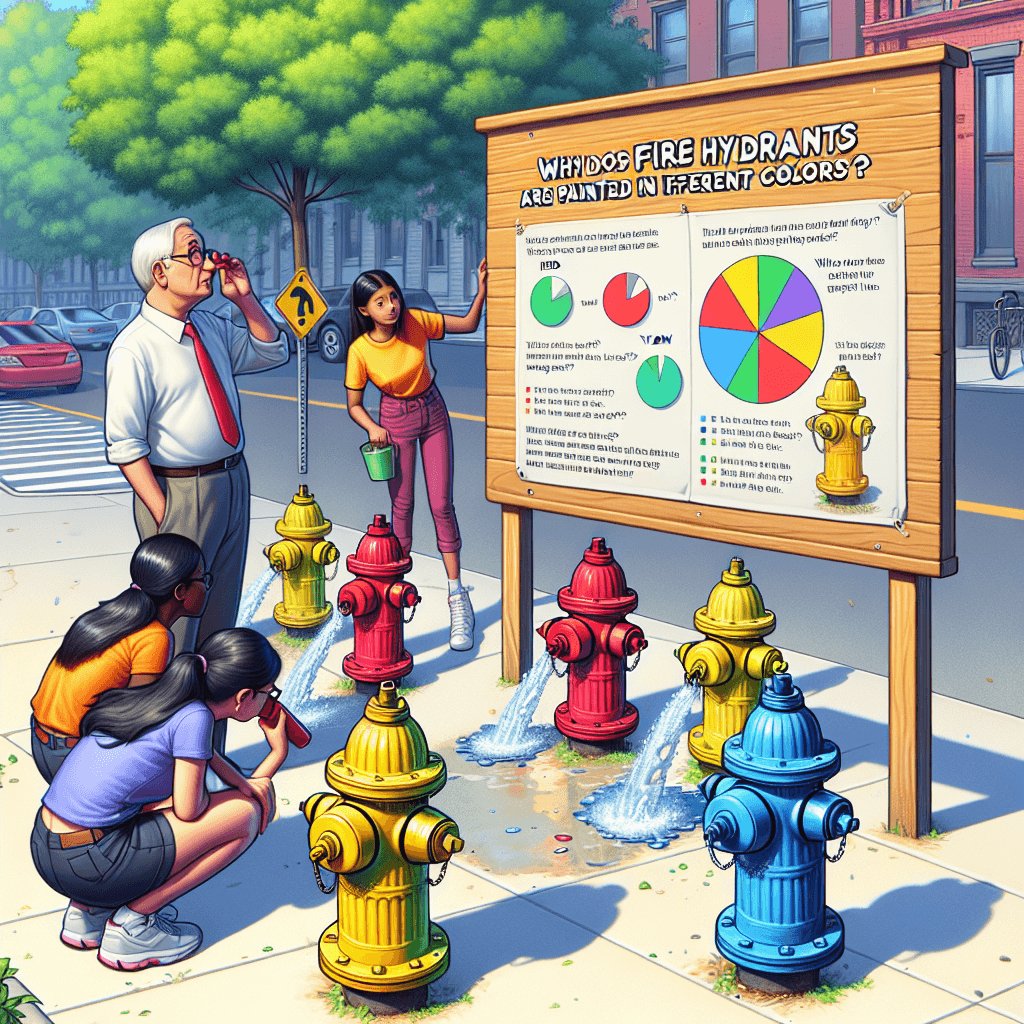Decoding the Rainbow: Why Are Fire Hydrants Painted Different Colors
Ever noticed that fire hydrants come in various colors? It's not for aesthetics; those splashes of paint are a crucial code conveying vital, life-saving information to firefighters.


Too Long; Didn't Read
Fire hydrant colors are a code that indicates water flow rate (gallons per minute), helping firefighters quickly identify the best water source for an emergency.
Decoding the Rainbow: Why Are Fire Hydrants Painted Different Colors?
They stand stoically on our street corners, often blending into the urban landscape until the sirens wail. Fire hydrants are critical pieces of infrastructure, but have you ever noticed they come in various colors? It’s not just for aesthetics; those splashes of paint convey vital information. Why are fire hydrants painted different colors? The answer lies in a system designed to help firefighters quickly assess water availability during an emergency. This post will delve into the color-coding standards and explain why this seemingly simple detail is crucial for effective firefighting.
The NFPA Color Code: A Standard for Flow Rate
While variations exist, the most widely recognized color-coding system in the United States comes from the National Fire Protection Association (NFPA). Specifically, NFPA 291, "Recommended Practice for Fire Flow Testing and Marking of Hydrants," suggests painting the tops (bonnets) and valve caps of fire hydrants specific colors to indicate their available water flow rate, measured in Gallons Per Minute (GPM) at a standard pressure.
This system helps firefighters instantly understand the capacity of a hydrant upon arrival at a scene. Here's a breakdown of the standard NFPA color classifications:
- Blue: Very good flow (1,500 GPM or greater) - Often found on large water mains.
- Green: Good flow (1,000-1,499 GPM) - Considered adequate for most residential fires.
- Orange: Marginally adequate flow (500-999 GPM) - May require supplemental water sources for larger incidents.
- Red: Inadequate flow (Less than 500 GPM) - Indicates very low flow, often needing careful consideration by fire crews.
Why Flow Rate Information is Critical
Knowing the GPM is not just trivia; it's essential for tactical decision-making during a fire. When fire engines arrive, the Incident Commander needs to establish a reliable water supply quickly.
- Resource Allocation: The color instantly tells crews whether a hydrant can support the high-volume water flow needed for large hoses (like aerial ladder pipes) or if it's better suited for smaller handlines. Connecting a high-demand pumper truck to a low-flow (Red) hydrant could actually drain the water main faster than it can refill, jeopardizing the water supply.
- Strategic Planning: Knowing the hydrant's capacity helps determine how many engines can connect to it or if water needs to be shuttled from a more distant, higher-capacity source. It influences the entire firefighting strategy, from where engines are positioned to the type of attack initiated.
- Safety: Using a hydrant appropriately ensures consistent water pressure, which is vital for firefighter safety on the front lines.
Local Variations and Other Colors
It's crucial to remember that the NFPA guidelines are recommendations, not federal law. While many municipalities adopt the NFPA standard, others may use different color codes or supplement the system.
- Different Schemes: Some jurisdictions might reverse the colors or use entirely different systems developed locally.
- Body Color: The color of the hydrant barrel (body) often relates to visibility (like bright yellow or red) or ownership. Public hydrants might be one color, while private hydrants (on commercial properties or private roads) might be another (often red, but this varies widely).
- Special Conditions: You might occasionally see other colors. For instance, violet (purple) is sometimes used, as recommended by the American Water Works Association (AWWA), to indicate non-potable water sources, such as raw lake water or reclaimed wastewater, unsuitable for drinking but usable for firefighting.
Therefore, firefighters must be intimately familiar with the specific color-coding system used within their response area.
Conclusion: More Than Just Paint
So, why are fire hydrants painted different colors? It's a visual communication system designed for speed and efficiency in emergencies. The colors on the hydrant caps and bonnets, primarily guided by NFPA recommendations, provide firefighters with immediate information about the available water flow rate (GPM). This allows for rapid tactical decisions, appropriate resource deployment, and safer firefighting operations. While the common barrel colors enhance visibility, the cap colors speak a critical language understood by first responders. The next time you walk past a fire hydrant, take a moment to notice its colors – they represent a silent, yet vital, piece of community safety infrastructure.


